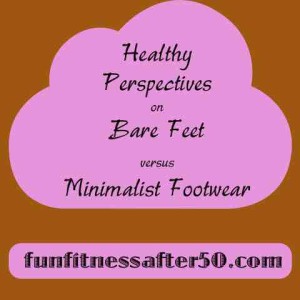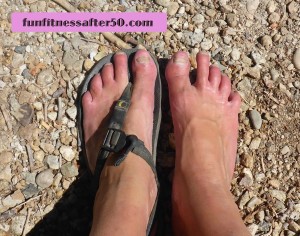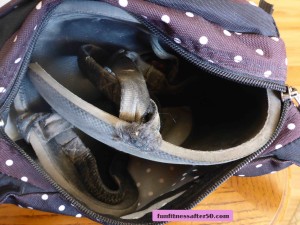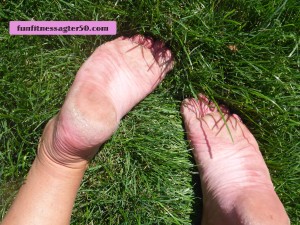 I am an avid barefoot runner and lifestyle barefooter. I haver run marathon distances barefoot a few times. I have run with bare feet on pretty rough surfaces plenty of times. My feet are getting adapted to what others might consider extremes in temperature. I shop and go into restaurants barefoot. I work in the garden barefoot. Most of the time.
I am an avid barefoot runner and lifestyle barefooter. I haver run marathon distances barefoot a few times. I have run with bare feet on pretty rough surfaces plenty of times. My feet are getting adapted to what others might consider extremes in temperature. I shop and go into restaurants barefoot. I work in the garden barefoot. Most of the time.
Sometimes I get frustrated by my personal limits of when I can be have bare feet. By this, I mean situations where the choice is completely mine, but that I know the conditions are beyond the limits of my current abilities. This may be hard for you to understand if you have not been living mostly barefoot, as I have. In short, the feet function best when bare, just like hands function best without gloves. No one I know goes around telling people that because sometimes the hands benefit from protection or can get injured in every day life that we should all wear gloves everywhere. Or, on top of that, that somehow showing bare hands in public is rude.
If you rarely go barefoot, and basically never let your feet be bare outside during normal activities, your feet have been ‘plugged’ for a while. I use this analogy because I went with someone to get a hearing aide the other day. Being able to hear completely for the first time in quite a few years was irritating to him, and perceived as painful sensory input, if the squinchy faces were any indication. But he could obviously interact with his environment better and communication with him was greatly improved. Soon enough, the unfamiliar sensory input will be much less overwhelming.
Getting used to bare feet can be like that. So many people tell me their feet are too sensitive to go barefoot. That is like telling me that because they have earplugs in all the time, normal conversation is too loud and sound cues around them are unimportant. (click on any photo to enlarge)

Yes, we all know that earplugs are useful sometimes. I have recently taken to wearing them when swimming, which is an activity during which I am basically not using my ears anyway (swimming in my own pool against the current) and it keeps a water out of an abnormal place. I probably won’t wear them if I do a triathlon again, because I want to be able to hear what is going on around me when I stick my head up to get my bearings.
Earplugs are highly recommended when around really loud noises, like at a gun range. The loss of hearing perception is compensated for by being more visually aware. But everyone likes to take the earplugs out when they can. It is a relief, like taking off your shoes.
Whatever the device used for protection of a body part, it is generally accepted that it should only be used in the extremes of conditions. It should be something that limits sensory input as little as possible to do the job of protection, as well as allowing maximum function. For some reason, most people ignore this basic wisdom when deciding when and what kind of shoes to wear.
For many years, I didn’t think beyond the predominate modern shoe paradigm. As a result, my feet were relatively weak and soft. And while they have gotten much stronger over the last few years of living barefooted, I have not been able to progress as quickly in my barefoot capabilities as my kids.
Leaving room for everyone having different sensitivities (I really don’t like spicy food or strong flavors), it is quite plausible that the natural abilities of my feet atrophied more since I am significantly older than they. Also, they were taught at home and allowed to be barefoot most of the time, whereas I attended public school for my childhood. I may have lost some of my natural fat pads on the bottom of my feet from lack of stimulation. I may be re-developing them, but that takes some time.
I have been enjoying when and where I am able to use my bare feet. That is actually most of the time and most places, but sometimes I cover them a bit. Like when the black asphalt parking lot is 100°, I wear minimalist sandals. Or when I am hiking in knee-high, pokey mountain shrubs, I wear leather moccasins with plenty of toe room. Or when my run takes me for very long on sharp gravel. Then, I grumble about it for a few minutes and slip on my Luna sandals.

Don’t get me wrong. My Luna sandals are some of the most perfect minimal footwear around. They don’t confine the foot. They allow for full toe spread. Their soles are flexible, letting my foot bend in all the right places. However, I know that running barefoot is the most fun. I just can’t do it on gravel at this point in my life.
The sharpness of the gravel quickly slows me down to a walk. I can run a few yards with bare feet, but then I have to decide what my goals are. A main goal is almost always to proceed on the planned run for the day. Since I run most of my mileage barefoot, my feet and lower legs are strong. I can still feel the bumps from the rocks, so all in all my running form remains good in my sandals. The main problem is getting some perspective and not feeling like a failure.
My husband says I am the only person in the world who would consider my putting on sandals for a run to be ‘failing.’ I try to remind myself that not only am I still making good progress in my barefoot capabilities, but I am currently running 30 plus miles a week. My last run was 14.7 miles, 90% barefoot. This is far from being a barefoot failure. But you know what it can be like in the moment of trial and decision.
The exact formula for a given individual regarding bare feet versus minimalist footwear is going to vary over time, depend on job requirements, and quite possibly some obscure personal variables. Full foot and ankle function will always be best, given moderate conditions, but sometimes extremes make minimalist footwear a wise and healthy choice for the time being. Just try to make sure it is the kind of footwear that allows the foot to be the foot. Then, take it off as soon as you can.

